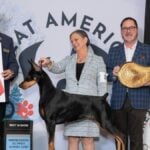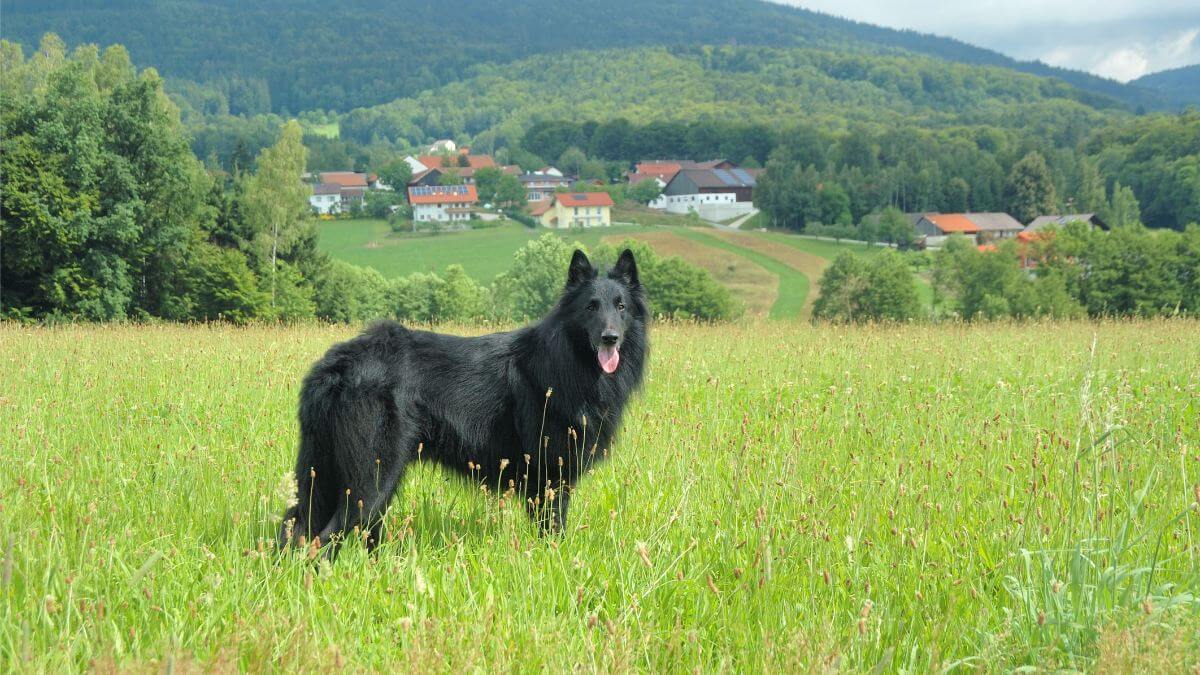


Home » Judging the Belgian Sheepdog

This article was originally published in Showsight Magazine, May 2015 issue.
You’ve reviewed the standard. You are well-versed in flaws and faults of structure and movement, and with this knowledge, you enter your ring.
It is doubtful you will have huge entries of this mostly owner-handled breed, as they are few and far apart. It takes a while to get to know them well. Ah, there are only two entries today. Being a solid-colored dog, you know you must look more closely because the details can get lost in poor indoor lighting. But you also know most herding, working breeds don’t appreciate direct stares. Now you are ready.
The day is sunny with a soft breeze flowing. He is standing naturally, square on all fours and alert. He seems totally engaged in his handler. He is lively and eager to get going. He’s not inclined to stand still, particularly if he’s young. His jet-black medium harsh coat drapes over him, sparkling and shimmering in the soft wind. The beautiful mane which frames his head is full and characteristic of a male. On the other hand, the female carries a shorter but equally dense coat, and her head is framed by a collarette around the neck.
He has no white spot on his chest or on the tips of his back toes. It’s not to be faulted as long as the chest spot or strip is small to moderate. He has some short white hairs on his chin, which is called “frost,” and some white between the pads of his feet, and that’s okay too.
Sometimes black hair can have reddish tinges when the sun reflects off the finer hair behind the ears, in the feathering, behind the shoulder, and the tips of the chest hair. Shedding dogs have reddish tinges when the hair is dead and ready to drop. Puppies, in particular, have more delicate coats, which burn easily from the sun. When he’s shed out, it can appear as if the thigh and shoulder on the side have been sculpted or cut out, but that’s just temporary until more hair grows in. The mane should be distinct from body hair. They do not resemble Collies in coat. They should never have an open coat.
He exudes elegance in his silhouette due to his balanced proportions and square body. His height is between the preferred 24 to 26 inches. His length, measured from the point of the breastbone to the point of the rump, equals his height. His outline, proud head carriage, and erect ears are his trademark. He reminds us of a black stallion.
On occasion, you see dogs who appear short on leg, and this definitely detracts from elegance. But be sure he’s not in tall grass or has excessive length of chest hair. Other illusions with big coats are lack of neck and length of body. This is where you must use your hands.
He turns towards you because he sensed you long before you think he did, due to his inherent aptitude as a guardian of flocks and protectiveness of the person and property of his master. He appears all at once extraordinary. Tentativeness on your part would only breed suspicion. You approach him directly and with confidence. He senses your confidence, and he stands his ground. Sometimes youngsters can be unsure, and you always give them the time, patience, and gentleness they require and deserve.
He has a full mouth and a scissors or level bite covered with taut black lips. Though pink on his gums is distracting, as long as the outside of his lips is black, it’s perfectly fine. His head is clean-cut and proportionate with his body. The skull is topped off with small triangular and well-cupped prick ears, and the base of the ears comes well above the center of his eye. Running your hands along the sides of his skull finds flat cheeks and sides. Looking from the top, you see a one-piece head and blunt wedge. Your hand finds a flat topskull and a muzzle that is at least equal in length to the topskull. From the side, his head is not deep. The stop is moderate. The planes, though not mentioned in the standard, approach parallel, and his bottom jaw is well-developed. The gaze from his dark brown, slightly almond-shaped eyes is direct, intelligent, and questioning, but not bulging, fierce, or piercing.
Going past his head, you find that he has a well-arched elongated neck, which is essential to his silhouette. His slightly high withers blend into his strong, level back. His shoulders are long and oblique and form a sharp angle to his upper arm, which is well under him. His loin is short but strong. His croup is gently rounded and gradually meets his beautiful plumed tail, which he holds low, the tip bent back level with the hock. The bone of the tail reaches his hock. His chest is deep and to the elbow. His prosternum, though not mentioned in the standard either, is well-developed and prominent. His underline smoothly sweeps up to his loin. His bone is oval, and his legs and hocks are straight and parallel to each other. He has the feet of a herding dog. His front feet are cat feet, and they are well-padded. His hind feet are slightly elongated but also well-padded. His pasterns are of medium length, strong, and very slightly sloped to give him the resilience he needs to move effortlessly.